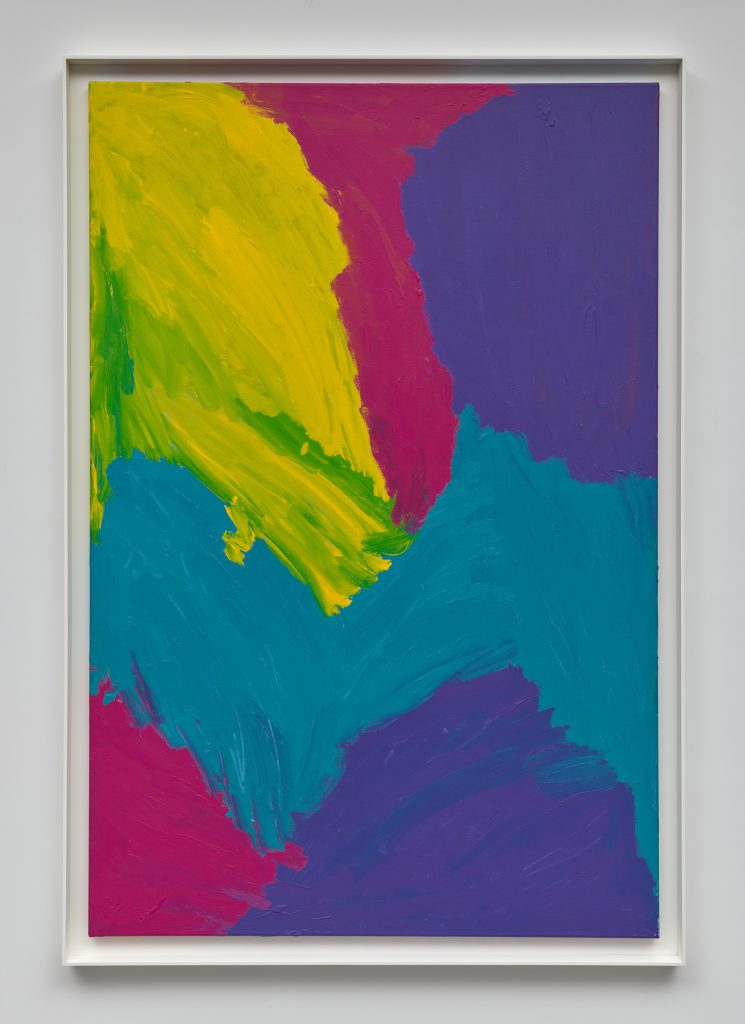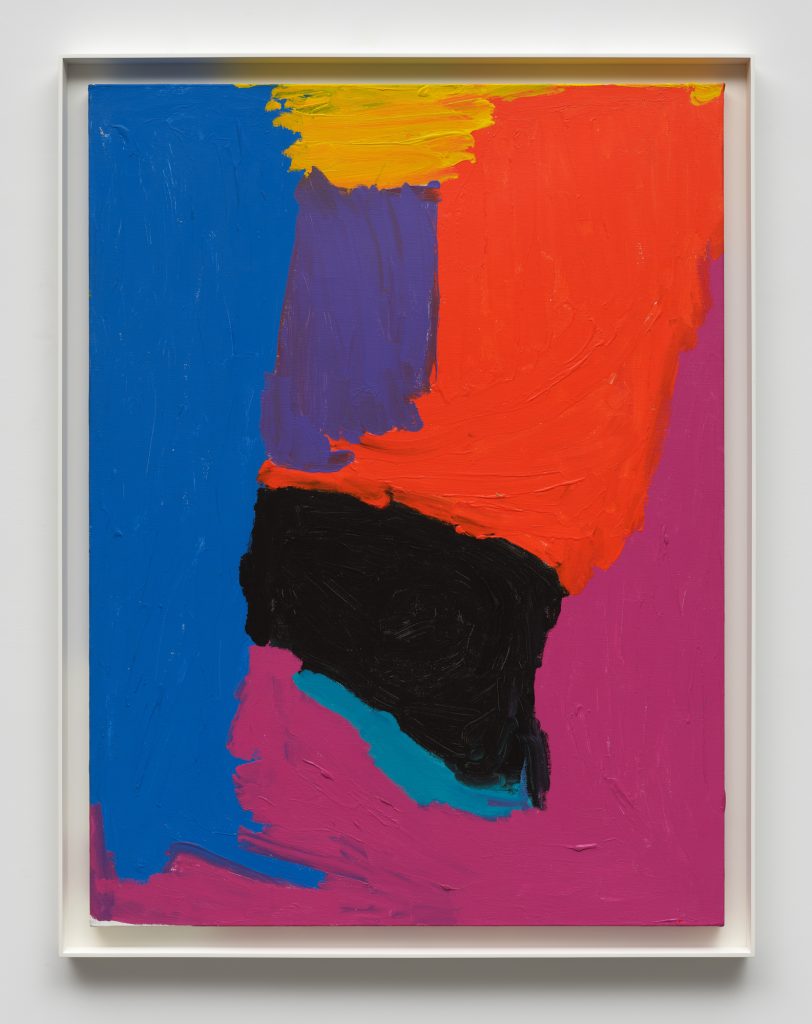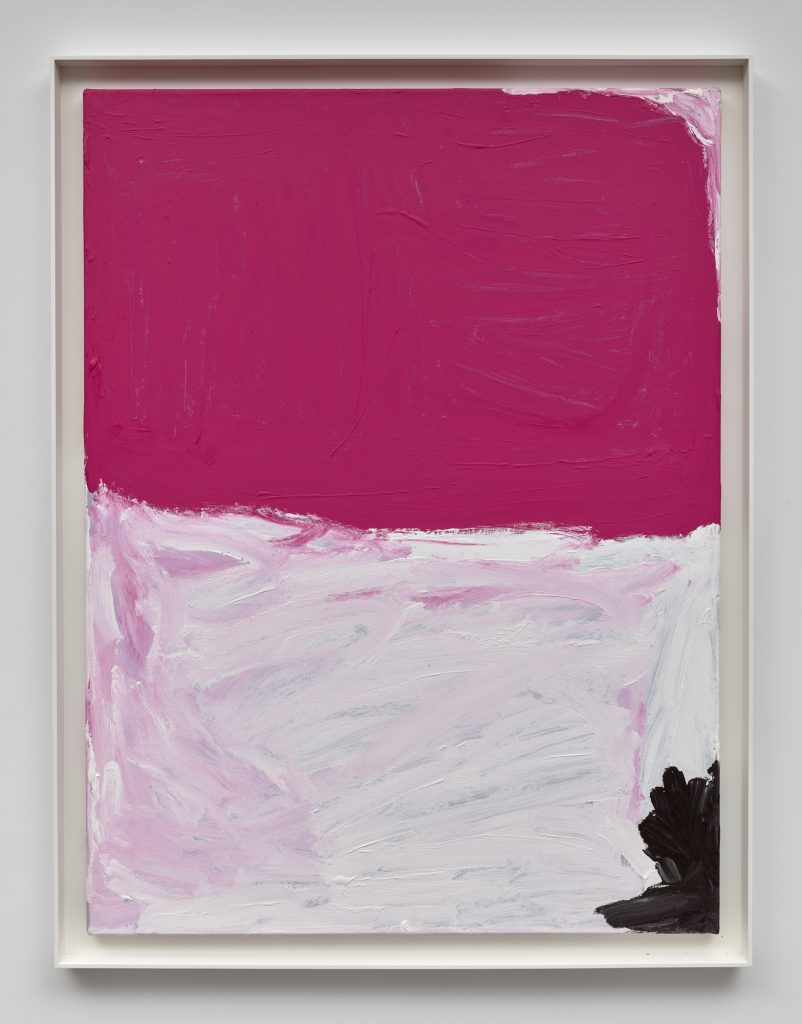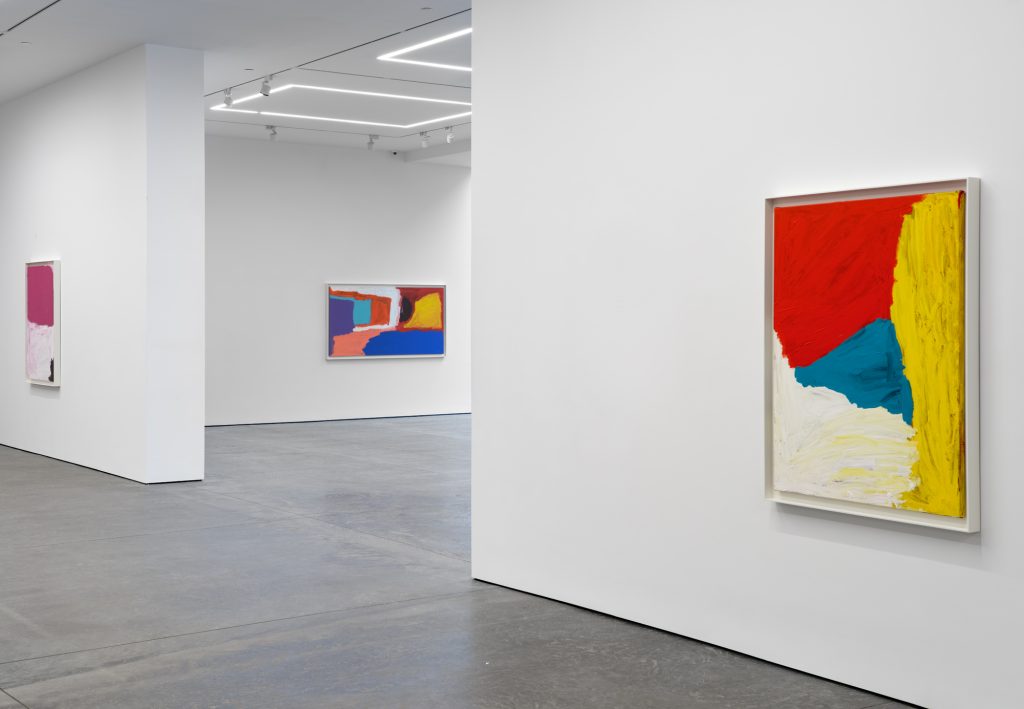Mirdidingkingathi Juwarnda Sally Gabori’s striking, contemplative, and sublime paintings in a new exhibition at Karma in New York City linger with me, and they brought me great joy to see. The first part of that name was the painter’s original name, and the artist, who is no longer living, also became known by Sally Gabori. She’s also identified with both names together, like written above.
Gabori’s showcased paintings, all on the larger side, are abstract but expressive and intensely evocative. Even if it’s not directly reflective of the external and physical, they’re still a place in which to similarly immerse, sensorily finding a kind of quiet rapture in something that’s aesthetically manifested but not direct. It’s visually fleeting, the momentary embedded within and gently resting in its place while becoming a story that becomes a person’s place, all right here. The forms and colors of these paintings are light but startlingly rich.
The gallery explains that, in these paintings, Gabori was recollecting the place of her early life, Bentinck Island, which is off the coast of Australia. Gabori and the island’s other inhabitants “were forcibly relocated by Christian missionaries” in the 1940s, an explanatory text said on the wall in the show. She could not even visit again for nearly 50 years, that return made possible by a legal move in Australia’s government.
Gabori’s forced departure from home is not central in these paintings, whose forms are reaching towards each other, on repeat. Instead, the place itself shines.
Though she did not directly represent the precise physicality of Bentinck Island, she captured uplifting, buoyant, and persistent relationships of space, the kind that make a place somewhere to live, in which one area of color or space seems at peace and a complement, a companion, to the next one — as a given. And that process of connection that you watch unfold in these paintings feels truly unhindered. It just is! The bright, luminous color palettes — every color a particularly strong, voracious version of itself — made the sweeping paintings feel powerfully and assertively present, a vision of something as wide-reaching as a place — and a home — occupying somewhere made for it.
Formally, Gabori’s areas of color are expansive but consistently unhindered. They’re a force that could shake the earth yet also remain above it, ready to move with those from the place in which they originate as a living memory, a vision, and a hope. That’s what I see here. It’s a hope that finds some fulfillment in its simple continuance, in the insistence upon the knowledge and assurance of who you are as a person and how you as a person come from a life-giving environment, a place you rested. The paintings are gentle and direct — something personal and accessible — while balancing the truly far-reaching, that which always was and remains outside the bounds of imposed structure. Here, you see the personal exist within the holistic and become the absolute.
No matter the specific color, Gabori’s paintings are insistently bright, the colors spread across each canvas in a way that each hue itself is enveloping. The paintings are awash in illumination that seems perhaps less physical — the art isn’t directly representational — than spiritual: a present and communicative transcendence. The colors themselves are internally lustrous, seemingly infused with what it meant to dwell in the place that Gabori was remembering and reflective of what it’s like, sometimes, to remember other once lived places.
In the paintings, broad in sweep but internally assured and caring, you feel as though the recollected places exist and shine as they were, fluttering quietly against an imagined, surreal sky. The forms create a feeling of inhabited promise; it’s a setting that remains lived, even if it doesn’t quite exist in the physical form in which it began and instead is now a memory or an imagining. Gabori’s artworks are spatially uplifting to the point that their individual journeys of space and color are an achievement, something monumental and full, and you’re already somewhere new just in holding onto this memory.
The presence across each painting becomes a companion, something greeting you, meeting you, and journeying with you, and it becomes one internally uplifted and lasting enough that you feel like it was there the whole time and will actually keep being there if you stop looking at it. It instead builds up, grows, expands, and billows like a blanket of cloud cover accompanying you.
The specifics of Gabori’s personal experiences as part of the Kaiadilt people are quite far from my own, but I appreciate the opportunity to see a glimpse of the artist’s unique visual perspective through the chain of events that led to visiting an art gallery in New York’s Chelsea neighborhood.
Gabori’s physical application of color across these paintings is visually evident, which makes the original place that these paintings evoke feel still active, still — and this is the hope provided by recollection, but it’s present here — lived. The paintings envision and embody a consistency from memory to the present that grants both a continued grace.
Gabori’s exhibition at Karma in New York City is closing on April 12.



Featured image: “Mirdidingkingathi Juwarnda Sally Gabori” (installation view), Karma, New York, Feb. 27 – April 12, 2025. Image courtesy of Karma.
You may also like
-
Diana Kurz at Lincoln Glenn in New York: A Review of a Shining Art Exhibition
-
Dustin Hodges at 15 Orient in New York City: An Ensnaring Exhibition at an Exciting Gallery
-
Maren Hassinger at Susan Inglett Gallery in New York: Reviewing an Uplifting Art Exhibition
-
Enzo Shalom at Bortolami in New York City: Reviewing an Entrancing Exhibition of Paintings
-
“Ben Werther: Townworld” at Amanita in New York City: Reviewing a Richly Memorable Art Exhibition
